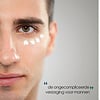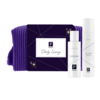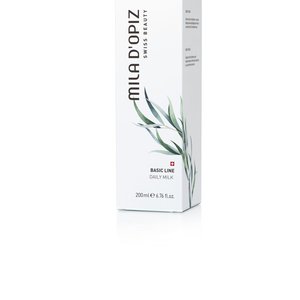Rosacea or couperose
Entdecken Sie spezialisierte Hautpflegeprodukte bei Couperose und erweiterten Blutgefäßen. Reduzieren Sie Rötungen und stärken Sie die Haut für ein ruhigeres, ebenmäßigeres Aussehen.






• Brightening effect
• Minimizes age spots and pigmentation disorders
• Creates an even complexion
• Strengthens the skin barrier Read more
• Brightening effect
• Minimizes age spots and pigmentation disorders
• Creates an even complexion
• Strengthens the skin barrier
Skincare for Rosacea and Dilated Blood Vessels
Introduction
Rosacea and dilated blood vessels are common skin issues that are particularly visible on the face. They are characterized by redness, visible veins, and sensitive skin. These conditions can be caused by genetics, sun exposure, extreme temperatures, and other environmental factors. Fortunately, there are specialized skincare products that help reduce redness and strengthen blood vessels, making the skin look calmer and more even.
What is Rosacea?
Rosacea is a skin condition characterized by chronic redness and visible dilated blood vessels, usually on the cheeks, nose, and chin. It results from weakened blood vessel walls that expand and become visible at the skin's surface.
Effective Skincare for Rosacea
Cleansing: Use gentle, non-irritating cleansers specifically designed for sensitive skin. Avoid products with alcohol and fragrances that can irritate the skin.
Serums and Creams: Choose serums and creams containing ingredients like Vitamin K, Niacinamide, and extracts from horse chestnut or grape seed, which help strengthen blood vessels and reduce redness.
Protection: Daily sun protection is essential as UV rays can damage the skin and worsen redness. Use a sunscreen with at least SPF 30 that is suitable for sensitive skin.
Soothing Masks: Soothing masks with ingredients like chamomile, aloe vera, and oats can help calm the skin and reduce redness.
Dilated Blood Vessels
Dilated blood vessels, also known as telangiectasia, are small, dilated blood vessels that are visible just under the skin's surface. They can occur anywhere on the body but are most visible on the face.
Treatments for Dilated Blood Vessels
Topical Treatments: Creams and serums with Vitamin C and retinoids can help strengthen the skin and reduce the visibility of dilated blood vessels.
Laser Therapy: For stubborn cases, laser therapy can effectively reduce the visibility of dilated blood vessels by shrinking and removing them.
Lifestyle Adjustments: Avoid triggers such as extreme heat, cold, spicy food, and alcohol, which can worsen dilated blood vessels.
Our Recommendations
At Nature-skins, we offer a comprehensive selection of specialized products for the care of skin with rosacea and dilated blood vessels. Our collection includes gentle cleansers, soothing serums, nourishing creams, and protective sunscreens, all carefully selected to improve the health and appearance of your skin.
Explore our categories and find the perfect solution for your skincare needs. With our products, you can enjoy calm, even, and radiant skin.
Rosacea or couperose
There is a kind of cement layer between the skin cells. This layer between the skin cells provides protection from the outside, but also against loss of moisture from within.
If this layer is interrupted or thinner, the blood vessels are also more visible and this gives a restless skin image with red spots.
The cause may also lie in a weaker connective tissue, so that the vessels can contract less strongly, and therefore more blood remains in the vessels.
These causes can be remedied by taking good care of the skin with active ingredients that do something about this.
Hamamelis, chestnut extracts, for example, pull blood vessels together.
Nourishing and restorative components protect and restore the ceramide layer (the cement layer) between the cells.
The redness is mainly found on the cheeks in the area near the cheekbone. The redness is caused by permanent dilation of small blood vessels. Dry thin skin in particular tends to do this. Permanently dilated capillaries are called telangiectasia.
It is wrongly called couperose.
In dermatology, rosacea or couperose is understood to mean something completely different.
It is a skin disease similar to acne. The condition was previously called acne rosacea.
There are, however, important differences between acne vulgaris and rosacea, so that nowadays the condition is no longer referred to as an acne form, but as a separate skin disease.


















 Skin type
Skin type
 Products
Products
 Skin problems
Skin problems
 Men care
Men care
 New
New
 Discount !!
Discount !!
 Mila d'Opiz
Mila d'Opiz
 Bernard Cassière
Bernard Cassière
 Ekseption Skincare
Ekseption Skincare
 Fusion Meso
Fusion Meso
 Derma science by Mila d'Opiz
Derma science by Mila d'Opiz
 Pascaud
Pascaud



